in the flight instruction business since 1967
There are five instructors on staff with lots of experience and patience to prepare the student for whatever their goals are in aviation. We specialize in emergency, taildragger and float plane instruction. Our students not only learn how to fly but understand the aircraft systems down to the smallest detail. We operate off gravel strips (Lake Hood Strip) bringing the student one step closer to bush operations. We also operate off Anchorage International airport to give the student exposure to larger aircraft and teach them how to operate off the largest airport in Alaska.
Aircraft
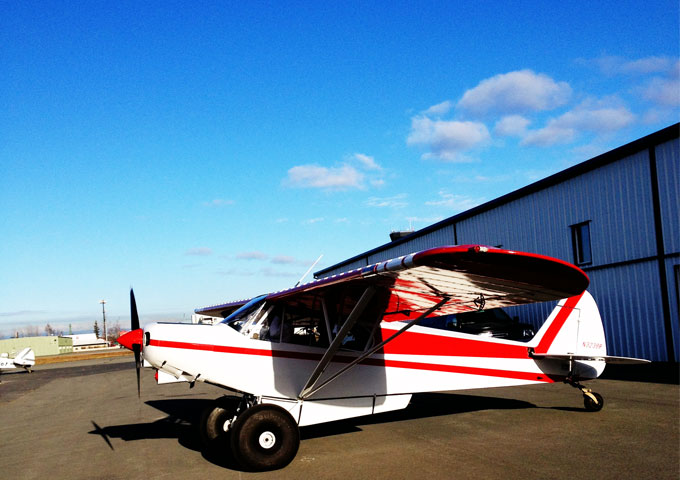
Pa-18
- The Piper PA-18 Super Cub is a monoplane with a single engine, which was first introduced in the year 1949. This aircraft was derived from the PA-11 Cub Special and can trace its origins back to the Taylor E-2 Cub of the 1930s.
The
Cessna 150
- This two-place, 100 hp tricycle gear aircraft is the principle training plane in most flight school stables. It is dependable,economical, and uncomplicated to fly. Arctic Flyers owns one C150, which is equipped for instrument training.
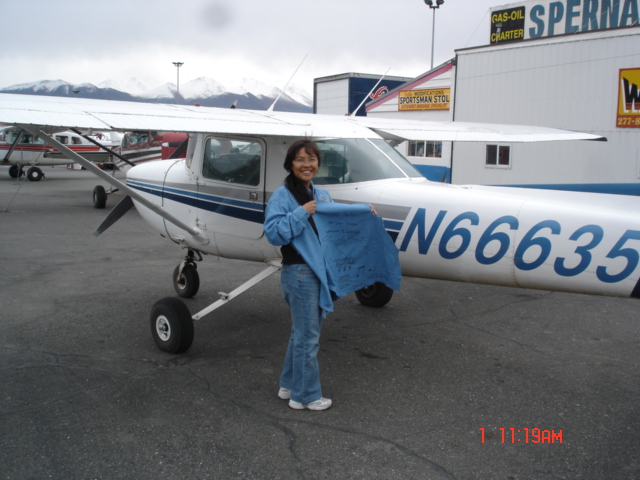
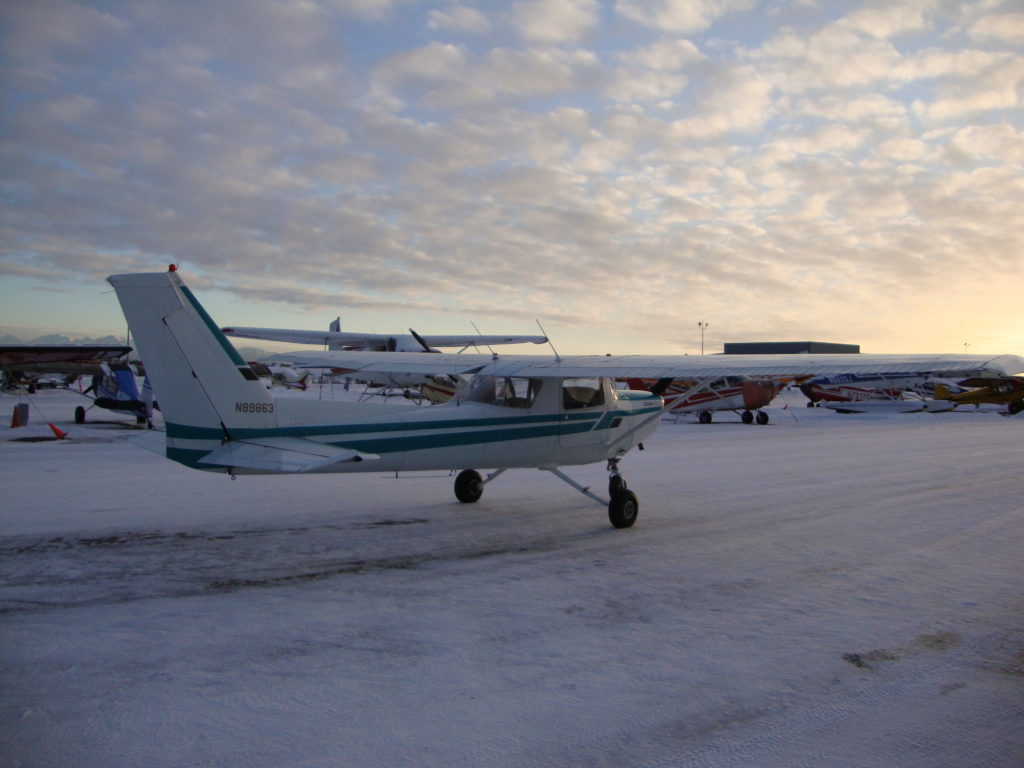
The Cessna 152
- It’s a Cessna 150 on steroids. This two-place, 110 hp tricycle gear aircraft is another training plane found in most flight school stables. It is dependable,economical, and uncomplicated to fly. Arctic Flyers owns one C152, which is equipped for instrument training.
The Cessna 172
- It’s one of America’s favorite planes to fly. It is an efficient, four-person tricycle gear aircraft, with a 150 hp engine. It is faster than the Cessna 150 or 152, is a better
performer, and only a little more complicated to fly. Many students choose to move up to the C172 after completing basic training in the C150 or C152.
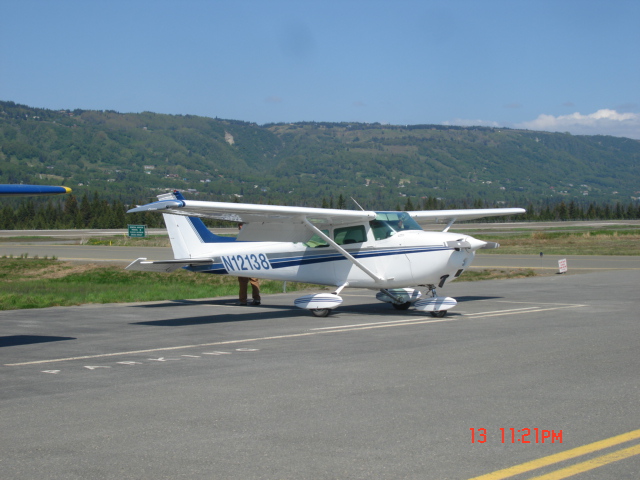
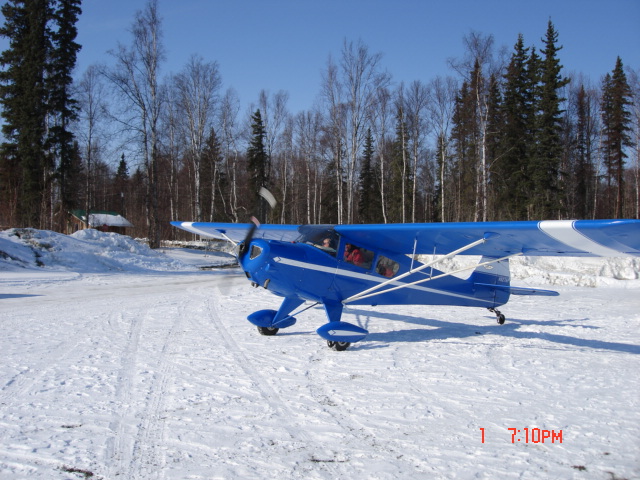
The Taildragger
- Many Alaskan pilots fly “taildragger” aircraft due to the unpredictable terrain they land on. With the nose held higher off the ground in a taildragger, pilots are less likely to encounter expensive “prop dings” and the nose wheel damage more common to tricycle gear aircraft.
- Taildraggers handle differently on the ground and in landing, so instruction in this particular type of aircraft is critical for Alaskan pilots. Arctic Flyers provides flight instruction of this type in the Taylorcraft.
Floats

The Cessna 172
- Our new addition to the fleet! The Cessna 172 on PK floats, with a 160 hp engine, is equipped with a STOL kit and improved exhaust system which increases performance.
Solo flight is not available in the
Cessna 172 on floats
The Taylorcraft
- It’s a well respected two person aircraft with a 100 hp engine. Once a student learns to fly this aircraft, whether on wheels or floats, he or she should be able to fly just about any other plane of its class with confidence.
Solo flight is not available in the
Taylorcraft.

Courses
Professional Flight Instruction given by two Airline Transport Rated pilots. Heidi Ruess, a CFI with more than 32,000 hours flying experience, provides float, tricycle gear, taildragger, instrument, and emergency instruction for Private pilot to Airline Transport Ratings. Rick Ruess, an FAA licensed A&P (Airframe and Powerplant Mechanic) and CFI, with more than 32,000 hours flying experience, provides float, tricycle gear, taildragger, instrument, and emergency instruction for Private pilot to Airline Transport Ratings.
Ground Instruction includes maintenance and aircraft systems on the aircraft we fly. Instruction is given in Cessna 150, 152, 172, and Taylorcraft F-19 aircraft. Our flight school is located at Lake Hood just south of Lake Hood strip. We operate out of Lake Hood and Anchorage International Airport.
Heidi Ruess has logged over 32,000 hours flight time as a commercial pilot and flight instructor. She has worked for the FAA as a pilot and several Part 135 operations in Alaska. She is ATP rated with single engine & multiengine land and sea ratings.
Rick Ruess has logged over 32,000 hours flight time as a commercial pilot and flight instructor. He has worked for the FAA as an aviation safety inspector and for several Part 135 operations in Alaska. He is ATP rated with single engine & multiengine land ratings including a Citation type rating. He also holds an Airframe and Powerplant Mechanics License.
Professional Flight Instruction given by two Airline Transport Rated pilots. Heidi Ruess, a CFI with more than 32,000 hours flying experience, provides float, tricycle gear, taildragger, instrument, and emergency instruction for Private pilot to Airline Transport Ratings. Rick Ruess, an FAA licensed A&P (Airframe and Powerplant Mechanic) and CFI, with more than 32,000 hours flying experience, provides float, tricycle gear, taildragger, instrument, and emergency instruction for Private pilot to Airline Transport Ratings.
Ground Instruction includes maintenance and aircraft systems on the aircraft we fly. Instruction is given in Cessna 150, 152, 172, and Taylorcraft F-19 aircraft. Our flight school is located at Lake Hood just south of Lake Hood strip. We operate out of Lake Hood and Anchorage International Airport.
Heidi Ruess has logged over 32,000 hours flight time as a commercial pilot and flight instructor. She has worked for the FAA as a pilot and several Part 135 operations in Alaska. She is ATP rated with single engine & multiengine land and sea ratings.
Rick Ruess has logged over 32,000 hours flight time as a commercial pilot and flight instructor. He has worked for the FAA as an aviation safety inspector and for several Part 135 operations in Alaska. He is ATP rated with single engine & multiengine land ratings including a Citation type rating. He also holds an Airframe and Powerplant Mechanics License.